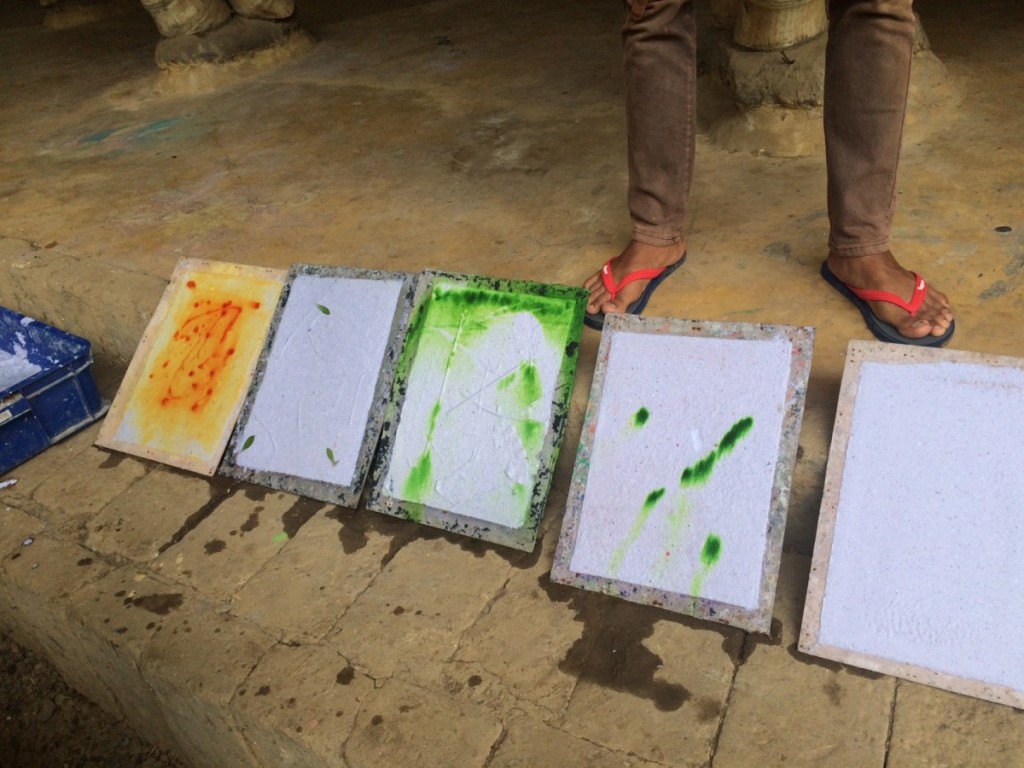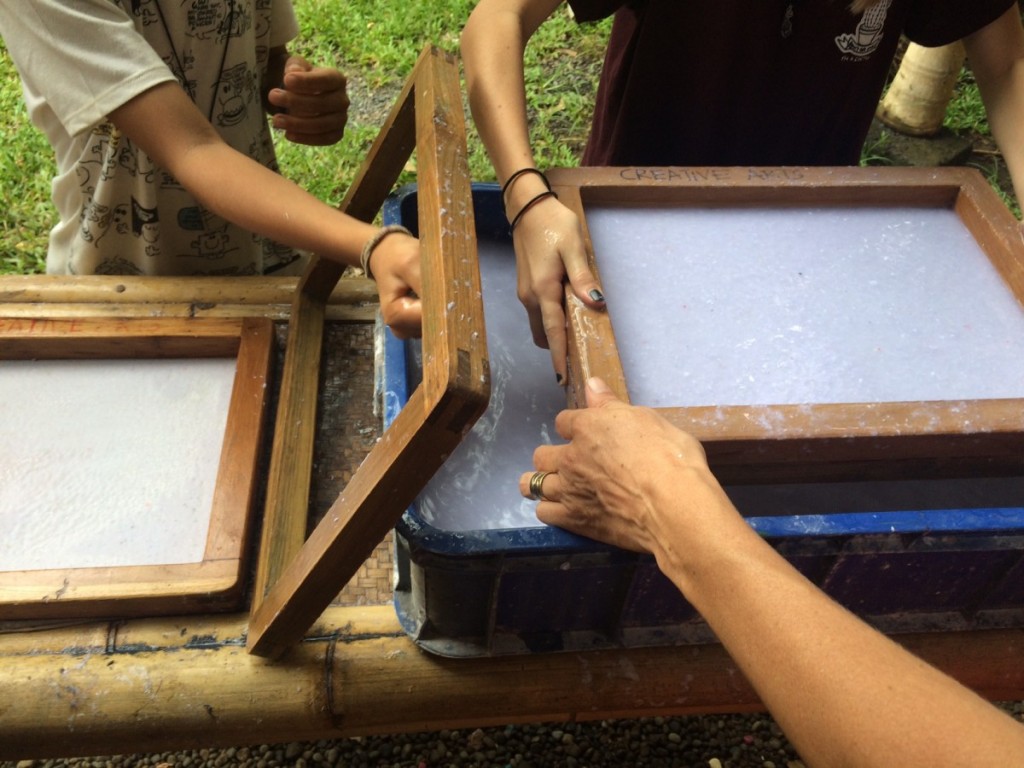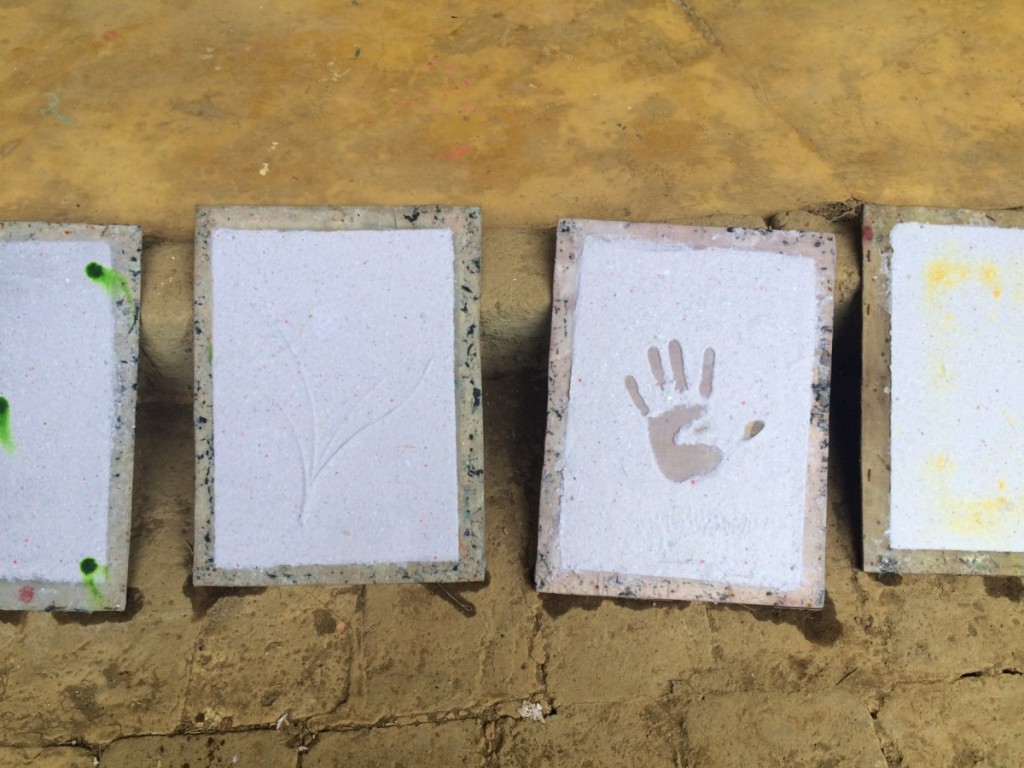A student told me recently that when she first arrived at Green School six years ago, they used recycled notebooks made from bamboo leaves. They made them right here on campus. When I asked her why she thought they stopped doing that, she told me it was because the parents complained about the notebooks not being efficient.
I can understand that point of view. If every current student at Green School used around 3 notebooks a year, that would mean we would have to make over 1,300 notebooks to provide for our students. And depending on how many pages of recycled paper were in each notebook + the labor of putting it together, this would realistically be a full-time operation to make them. I get it. Not very efficient.
But this brings me back to the beginning of things. Of all the things that, as humans, we have made to meet our needs. I read recently in Elizabeth Gilberts’ most recent book, Big Magic, that some of the first works of art are dated to about 40,000 years ago, while the first forms of agriculture are dated to about 10,000 years ago. “Which means that somewhere in our collective evolutionary story, we decided it was way more important to make attractive, superfluous items than it was to learn to regularly feed ourselves” (Gilbert, 87)
Now THIS is a concept that I can run with. I think that for the majority of the past century, we have chosen efficiency over the handcraft. As a result, wear clothes that have been made by someone else, eat food that someone else grew, live in shelter that’s been constructed by another– the list goes on and on. And it’s depressing, because techniques such as ikat (from my previous post) can become extinct. And the culture that is so deeply associated with it.
To counter the facts, we have the ability to change the way we think about things. When we make our own materials, we become more aware of them when we use them.
Which is precisely why we chose to make our own paper!
This paper is made from recycled paper that comes from all over the school. When we first started making it, I thought that we would certainly run out of paper to make paper out of. I mean this is Green School… its inhabitants are pretty conscious about their use of materials. But we seem to have had a steady stream of paper to use for the art room.
Students can use their handmade paper to make their own sketchbooks, or notebooks for class, or to paint on in the art studio. If we want to make a more sturdy paper, we can blend bamboo leaves into the mixture. If we want to make colored paper, we can use natural plant dye.
Middle school students had a really fun time with this project!
HOW TO MAKE HANDMADE PAPER:
- Collect scraps of paper and rip them into shreds. Make enough to fill 1-2 buckets.
- Place the shreds in buckets and add water. Let sit overnight.
- Blend the soggy paper in a blender. You will need to add more water.
- Place paper pulp into another container. Run your fingers through it. (Pictured above)
- Fill a flat container (such as a plastic box) with water. Add the paper pulp. (This process will need to be an experiment, as the amount of paper pulp you will need varies depending on the size of the container + water).
- You will need two wooden frames– one with a screen and one without (pictured above). Place one on top of the other and “scoop” the frame into the water, collecting and draining the paper pulp.
- Take out of the water, sponge the screen to remove excess water.
- Take off the frame, exposing one side of the paper with the screen on the other.
- Press this with a board. A thin piece of wood would suffice.
- Flip to remove the screen, and viola! Your paper is on the board, ready to sit out in the Bali sun to dry for 1-2 days.
References:
Gilbert, Elizabeth. Big Magic: Creative Living beyond Fear. New York: Riverhead, 2015. Print.







Be First to Comment